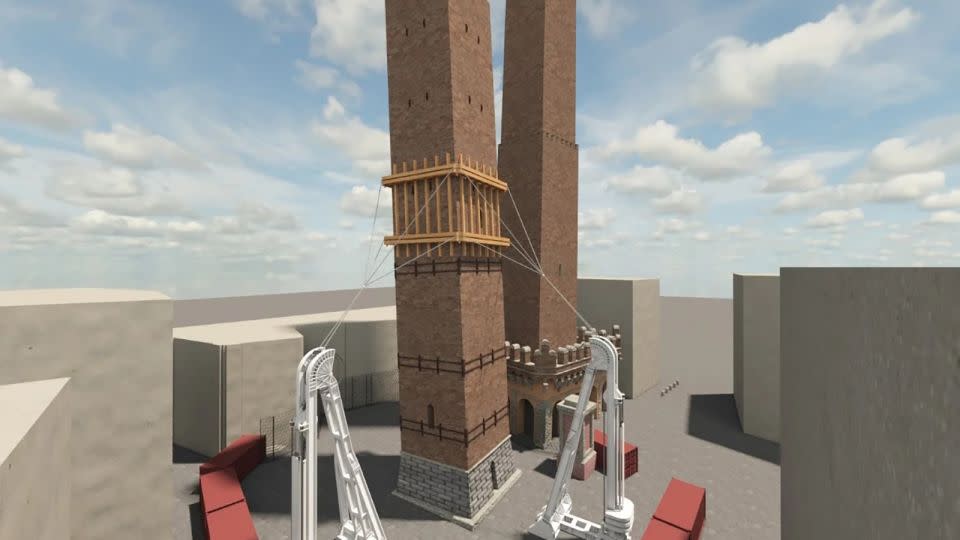Feb. 23—REDBY — In the midst of a new year,
Red Lake Nation
remains committed to highlighting its triumphs while addressing struggles of the past and present.
Such a sentiment threaded its way throughout the 2024 State of the Band Address on Friday, complete with song, dance and rich Anishinaabe traditions.
Opening with four songs from the Little Bear Drum Group, Fred Desjarlait, Jr. recited an opening prayer before the introduction of nation royalty and notable guests.
Tribal council members then provided remarks on several priorities.
The ongoing effort to restore boundaries to include the entirety of Upper Red Lake
and other land proves to be a top priority as the nation moves into 2024 and reflects on 2023.
Last year, the nation announced plans to restore tribal boundaries in accordance with treaty negotiations in 1889. This included expanding boundary lines so that all of Upper Red Lake is under the nation’s control.
Currently, around 60% of Upper Red Lake falls within tribal boundaries. Tribal Chairman Darrell Seki Sr. noted the past year’s advocacy and meetings with the U.S. Department of the Interior to “right a historical wrong” following the Dawes Act of 1889.
This intended to aid assimilation by dividing communal tribal land into smaller household-size land plots for farming and private ownership. Once each head of household was allocated 160 acres of land, the remaining land would be made available for sale to non-Native Americans.
“The arbitrary allotment was done without consideration to the nature or type of lands, and not all lands were suitable for cultivation,”
Red Lake Nation’s website reads.
“The end result deprived Native Americans of millions of acres of traditional territory.”
Despite ceding tracts of land to the United States, the band maintained control of its central portion of land. The nation formerly encompassed 3.2 million acres in 1889 before ceding 2.9 million acres to households registered under the Dawes Act.
This left Red Lake Nation with roughly 300,000 acres including all of Lower Red Lake and the western portion of Upper Red Lake. During negotiations, Seki detailed that Red Lake hereditary chiefs drew a line surrounding the entirety of both Upper and Lower Red Lakes on an 1889 Rand McNally map, over which Red Lake Nation would retain full sovereignty.
However, Seki claimed that the map, presented by government officials in St. Paul after negotiations with Red Lake, did not include the aforementioned outline and instead depicted a line that splits Upper Red Lake into two parts, which can be seen on current maps.
“The band has been advocating for the return of the entire Upper Red Lake along with a one-mile buffer of land around the lake,” Seki said. “The Department of the Interior attorneys are working with our attorneys to finalize a legal opinion.”
Seki also pointed to 92,000 acres of land north of Red Lake Nation leased by the U.S. Fish and Wildlife Service to the state of Minnesota in 1940. According to Seki, the nation was not informed of the lease and the tribal council will seek an early cancellation of the lease, currently set to expire in 2035.
“Because the band was not informed of this lease, the band did not consent to the lease,” Seki added. “It’s the state of Minnesota and the federal government that deceived us and stole our lands. We want our lands back that were stolen from us, returned to our membership.”
Tribal Secretary Sam Strong noted the Seven Grandfather Teachings — specifically bravery — in reference to the nation’s efforts regarding land regainment.
“To be brave when adversity hits … we are fighting to regain the land around Upper Red Lake. This fight is going to have us come together, working in the federal government to regain that land,” Strong said, “and this legislative session, fighting to regain all the state land around Upper Red Lake. Let us come together when those hearings happen.”
Supplemented with video presentations by different departments, the State of the Band highlighted a variety of other developments from 2023 notably in education.
Two years after breaking ground on the site of its first charter school,
Endazhi-Nitaawiging opened its doors last November
and now serves as an immersion school for the nation’s most precious commodity.
Red Lake Public Schools began the process of electrifying its school bus fleet
last year with hopes to reduce its carbon footprint and add to its previous sustainability efforts.
The district received two grants totaling $790,000, which will be leveraged for the purchase of two electric buses and the implementation of a charging station.
The Red Lake Buffalo Ranch also saw an increase in its number of bison
— currently over 30 — which serve as part of the nation’s food initiative meant to increase access to locally sourced meat and produce for tribal members. Local schools and community programs take field trips to learn about the farm and strengthen the nation’s food sovereignty.
In November,
the nation purchased the former Central Elementary building
from the Bemidji Area School District for $350,000.
The nation is prohibited from using the building for any Pre-K through 12th-grade educational purposes — excluding non-educational child care — and for the sale, manufacturing, distribution or storage of cannabis products or low-potency edible hemp products.
Plans for the facility include offering services surrounding wellness and addressing community needs related to poverty.
Alongside statewide legalization,
Red Lake opened its NativeCare dispensary
— now operating as a stand-alone business — for recreational marijuana on Aug. 1.
According to Strong, 2,270 tribal members signed a petition in support of the council authorizing legal recreational marijuana use. This came after an 80% referendum vote to
legalize medical marijuana in 2020,
after which NativeCare was established in 2021 to sell products to those with certain medical conditions.
Accordingly, the council amended its tribal code on July 11 to legalize recreational sales.
In October, the nation opened its Intergenerational Wellness Building,
a $15.5 million facility home to the Ombimindwaa Gidinawemaaganinaadog — translating into “lifting up our relatives.”
Located on the shores of Lower Red Lake, the building is meant to be a place where community members can access a wide range of services and as a place to gather.
Tribal Treasurer Vernelle Lussier reported Red Lake Nation’s unaudited financial picture from the past year at $177 million in revenue and $166 million in expenses, clocking in at $11 million in the black.
As the nation moves past February, Strong noted the nation’s struggles while emphasizing the hope that’s part of tribal identity.
“We’re dealing with much as a nation. We’re dealing with the crisis of poverty, drug addiction, low educational attainment rates and we need to remember our people are struggling. But we have hope,” Strong left off. “That hope is in our identity, that hope is in our future.”
Signup bonus from





